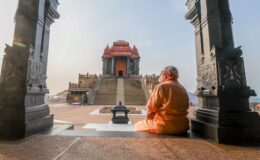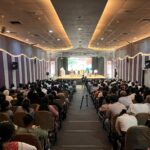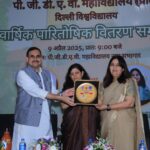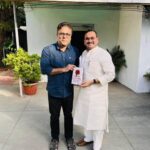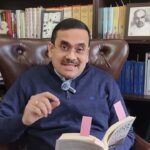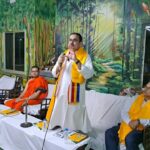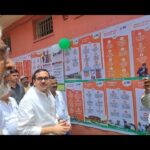Widening the ‘narrative’
- By : Anirban Ganguly
- Category : Articles
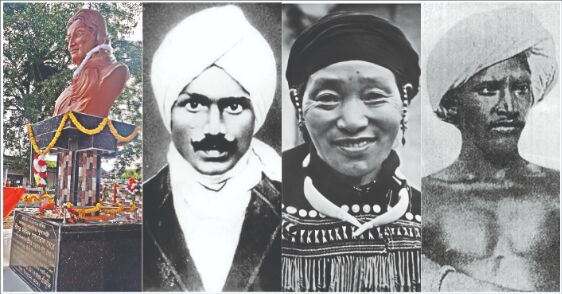
While scripting the history of India’s freedom struggle, we missed out the real protagonists — a gulf being bridged today by the country’s leadership.
Addressing the centenary celebration of the iconic freedom fighter and spiritual leader — Rani Gaidinliu — of Nagaland, and of the northeast as a whole, in August 2015, Prime Minister Narendra Modi had observed that ‘either we have forgotten such great people or we have been made to forget on purpose.’ In a similar league was the legacy of the participation in the freedom struggle of the tea tribe community of Assam, which had also faced oblivion. How can the legacy and sacrifice of Mangri Orang (Malati Mem), who was killed by the British, because she participated in the non-cooperation movement, be forgotten and why could their contributions never find nationwide mention and documentation. In the early years of independence, the effort to put together a comprehensive narrative of the freedom movement was still-born because of political pressures to make it unidirectional, unilateral and narrowly focused.
It is one of the tragedies of the narrative of our freedom movement that a large number of personalities such as Rani Gaidinliu, who had contributed immensely to India’s struggle for independence, had suffered great privations for the sake of India, were swept into oblivion once freedom was attained. Similar had been the fate of the striking legacy of Subramania Bharati — ‘Maha Kavi’ of the revolutionary movement — until PM Modi, in a historic gesture imbued with deep symbolism, instituted a Chair in the epochal poet’s name at Banaras Hindu University. It gave the quest for an authentic and all-encompassing narrative of the freedom movement, a major fillip.
This sweeping aside was a motivated political and ideological move in order to try and dilute the nationalist core of our struggle for independence. Such has been the fate of a large number of revolutionaries across India in almost all the provinces.
For political and ideological reasons, their legacies faced marginalisation or were only paid lip service. No concrete or substantial initiative was launched to preserve and disseminate their contributions and to comprehensively integrate their legacies in the broader narrative of the freedom movement. Often the regional variations and contributions were neglected or minimised. When they were considered, as had been done by a section of the communist historians, it was with the intention of delinking them from the larger flow, of placing them as leaders who had no sense of the whole and therefore ideal icons whose legacies could be pushed to present the narrative of national fragmentation.
Historian SP Sen, who spent the best part of his life trying to broad base historiography in India and pushed for a comprehensive study in his ‘Historical Writings on the Nationalist Movement in India’, spoke of the regional variation and contributions to India’s freedom struggle which must not be neglected in the writing of the history of India’s struggle for independence. Sen argued, ‘The nationalist movement in India was in one sense, no doubt, a common movement for all parts of India. But there were wide differences between province and province in the nature, motivation, timing and intensity of struggle’, thus, argued Sen, any ‘study of the Indian nationalist movement must take into account these regional differences’ and a study of the movement at an all-India level would therefore be hardly adequate and complete if one were to overlook ‘these regional differences.’ This aspect faced continuous neglect.
Lamenting the politicisation of history writing which began with the Nehru government’s effort to initiate a national project on writing the history of the freedom movement and which had resulted in the collection of a ‘huge mass of source material from all parts of India’, Sen noted that very soon the project was bogged down by political and ideological considerations: ‘in the normal course this would have helped the compilation of a very comprehensive and authentic history of the freedom movement which would have been the pride of Indian historiography. Unfortunately, political, party and group considerations swayed the members of the Committee set up’ by the Nehru government for this purpose, ‘historians were asked to write only what the party or group in power wanted them to write, giving a wholly unhistorical version of the freedom movement.’
When faced with resistance from a section of the historians enlisted for the work, Nehru disbanded the Committee and the project itself was abandoned. Thus, a comprehensive narrative of the freedom movement was never put together. The first years and decades of freedom could have been an ideal time when such a history could have been written with many of the participants or colleagues of principal figures, both national and regional, still around.
The contributions of the Tribal (Janajati) leaders to the freedom movement in the course of this abandonment faced a black-out. At times when they have been referred by a section of ideology-driven communist historians for instance, they have been spoken of in compartments, with their anti-colonial and reformist approaches being portrayed as a revolt against the larger attempt by Hindu society for a cultural self-recovery. It can be argued that tribal leaders against colonial occupation had infused the movement, in the early days, with ideas of social reforms and of a spirituo-cultural quest for their identity and for the preservation and dissemination of their cultural fundamentals. Protection and retrieval of usurped land and natural resources from colonial capture, preservation of resources – which was always sacred – were cardinal and along with these, a fundamental dimension of the movements was the preservation of their sacred spaces and ways of life. All of these were never divorced from a large sense of India. The narrative of their contribution never found adequate space, were never highlighted and were never integrated in a major way in the syllabuses on history of the freedom movement.
Prime Minister Modi’s declaration of observing November 15, birth anniversary of the iconic Adivasi spiritual and social leader and freedom fighter, Bhagawan Birsa Munda, as the ‘Janajatiya Gaurav Divas’ and the inauguration of freedom fighters’ museum, addresses this vast chasm-like lacuna in the narrative of our freedom movement. The decision to establish tribal museums in various parts of the country, to encourage the dissemination of the legacy of tribal participation in India’s freedom movement, is in itself a very crucial step in integrating and internalising this long-neglected aspect of the movement. This integration cements the intellectual and physical contributions that Janajati leaders made to reigniting the India narrative. All these leaders were also active social reformers and educators, freedom for them consisted of social empowerment, spread of education, inclusivity and a right to take their decisions and to manifest their cultural and religious aspirations with dignity.
In contrast to slogans and hollow tribute that successive governments and leaders of free India have paid to their legacy, PM Modi, representing the gratitude of free India, has actualised a long-pending collective sense of tribute. This act also signifies the expansion and the deepening of the story of the struggle for India’s freedom.
The writer is a member of National Executive Committee (NEC), BJP, and the Director of Dr Syama Prasad Mookerjee Research Foundation. Views expressed are personal



